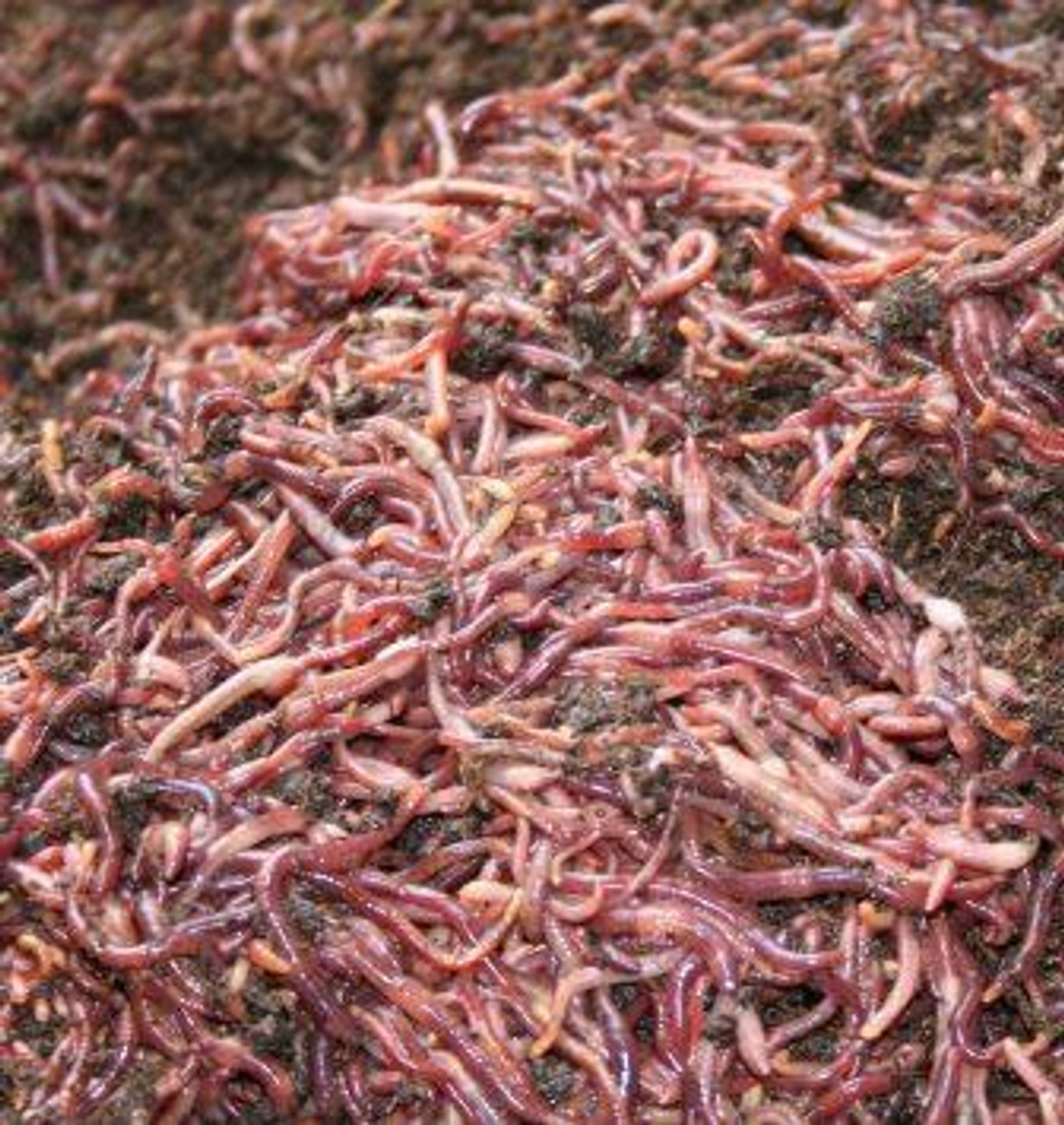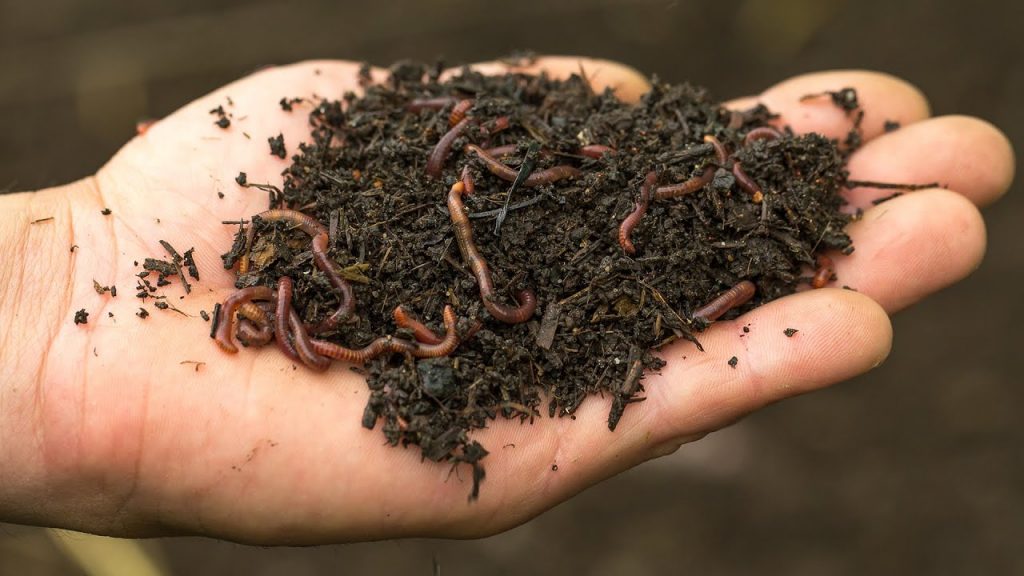Everything about Where To Find Red Wigglers
Wiki Article
Some Ideas on Where To Find Red Wigglers You Need To Know
Table of ContentsNot known Details About Where To Find Red Wigglers The Main Principles Of Where To Find Red Wigglers Some Ideas on Where To Find Red Wigglers You Need To KnowThe smart Trick of Where To Find Red Wigglers That Nobody is Discussing4 Simple Techniques For Where To Find Red WigglersWhere To Find Red Wigglers Fundamentals Explained
For ideal outcomes, you desire to fire for concerning 60-70% dampness level. At the perfect wetness levels which is simply under 70% that handful must hardly produce one drop of fluid.
The Indian Blue is ravenous, but additionally likes a warmer environment and it additionally exhibits a tendency to escape the container. The red wiggler is a sturdy worm and isn't as choosy concerning its climate. I like to call it the Ford Taurus of vermicomposting worms; you will not boast to your hardcore composting pals that you have them, however they will certainly serve you well.
Like any type of various other bait, a worm's performance has actually concerned depend on its discussion. H.G. "Faucet" Tapply emphasized this factor nearly a half century earlier in among his Field & Stream columns. "A worm is such an unformed animal," he composed, "there does not seem to be significantly a fisherman can do with it other than jab it on a hook and toss it right into the water." As Tap demonstrated, an angler can do a great bargain to make a worm a lot more appealing.
The 10-Second Trick For Where To Find Red Wigglers
I assume you will certainly as well if you attempt them. The smaller sized the trout stream, the better worms work is an axiom that hasn't changed in the 100-plus years given that Perry wrote his article. Anglers of his era just stuck their weak fly poles via alder tangles and went down a heavy worm into a deep opening.Early morning is prime feeding time, and the insubstantial lure's sluggish descent leaves 5 inches of agonizing protein completely view for fairly a while. After you have actually made the actors, keep the bail open and put the rod in a forked stick. The line will fall off the rod in slow loopholes as the worm resolves, but usually the sluggish loops will become a blur, and the early morning will all of a sudden get rather intriguing.
You can fish deep and cover a great deal of region, and the spider appears to be the best touch for this transitional time, when the smallmouths have yet to lock on to a preferred forage. Dark jigsblack, brown, and purpleseem to match the nightcrawler's shade. I usually make use of a whole 'spider, choose marabou clothing, and go down the pole for 2 or three secs when I obtain a hit.
And distinguishing base from a bite can be hard. The method is to relieve the rod back to the strike (possibly a foot) and really feel for life at the end of the tightening up line. If it's there, established the hook with a sweep instead of a jerk. Occasionally you'll discover on your own hooked to those slow-moving, hearty yanks, and feel the weight of a nice walleye.
8 Simple Techniques For Where To Find Red Wigglers
When the heavy walleyes carry on to the big-water shoals in the late summertime, attempt going after them with a bucktail jig and a 1-inch pinch of nightcrawler. The lure covers the hook factor, disperses weeds, and offers a preference of target. With absolutely nothing dangling or flapping, it remains secure regardless of present, casts, or enthusiastic panfish.Whether you're wading or angling from a boat, wandering Read Full Report worms is just one of the wonderful looking techniques for bigger rivers. For trout, a spade-dug, 4-inch yard worm is the ideal size; for bass, walleyes, and steelhead, a nightcrawler might be a far better selection. The trick is to drift the bait with feeding and holding locations due to the fact that fish in current are not going to ferret out the lure, as they could in still water.
Fish the transitions: mouths of tributaries, bank-side slicks, and the edges of large swimming pools. His dictum uses to any number of angling maneuvers, consisting of the issue of adding an item of worm to a damp fly.

Top Guidelines Of Where To Find Red Wigglers
Fill it with shredded paper, leaves, peat moss, and soil. Moisten lightly. Cover and allow sit for a week. Include a few hundred worms and feed them two times a week. Maintain the bedding wet but not wet. On the food selection: lettuce, fruit and vegetable waste, and the periodic nongreasy leftover.Simply like veggie scraps, you can take your utilized coffee premises and include them to a worm box. Worms like eating coffee premises. With the appropriate conditions and moist, healthy and balanced soil, worms can stay in a bucket of dirt for around three weeks. Shop out of direct sunshine and maintain a temperature level between 50 and 80 levels.
When the heavy walleyes move on to the big-water shoals in the late summertime, try going after them with a bucktail jig and a 1-inch pinch of nightcrawler. The bait covers the hook factor, deflects weeds, and offers a preference of target. With nothing dangling or waving, it continues to be safe despite existing, casts, or ambitious panfish.
Getting The Where To Find Red Wigglers To Work
Whether you're wading or fishing from a boat, wandering worms is one of the fantastic searching strategies for larger rivers. Where To Find Red Wigglers. For trout, a spade-dug, 4-inch yard worm is the ideal size; for bass, walleyes, and steelhead, a nightcrawler may be a far better option. The key read is to wander the bait via feeding and holding locations since fish in existing are not mosting likely to ferret out the lure, as they might in still waterStrikes will certainly come as a sharp pull as opposed to a pull or rap. Fish the transitions: mouths of tributaries, bank-side slicks, and the sides of big pools. As the late Ed Zern, Area & Stream's great satirist, once i was reading this put it: Fishermens are born truthful yet they overcome it. His motto relates to any kind of variety of angling maneuvers, including the matter of including a piece of worm to a damp fly.
But elevating your own lure implies you can unclothe your house and hit the pond prior to Mom comes homejust like in the old days. Here's how to keep a worm box: Cut a sheet of CDX-grade plywood, which is made with waterproof adhesives, to your measurements. Accomplish with each other and drill a dozen 12-inch holes in all-time low for drainage.
Where To Find Red Wigglers Can Be Fun For Anyone
Fill it with shredded paper, leaves, peat moss, and dirt. Moisten lightly. Cover and allow sit for a week. Add a few hundred worms and feed them two times a week. Maintain the bedding wet yet not damp. On the menu: lettuce, fruit and vegetable waste, and the periodic nongreasy extra.Similar to veggie scraps, you can take your used coffee grounds and add them to a worm box. Worms enjoy eating coffee grounds. With the right problems and moist, healthy and balanced dirt, worms can reside in a container of dirt for around three weeks. Store out of straight sunshine and maintain at a temperature between 50 and 80 degrees.
Report this wiki page